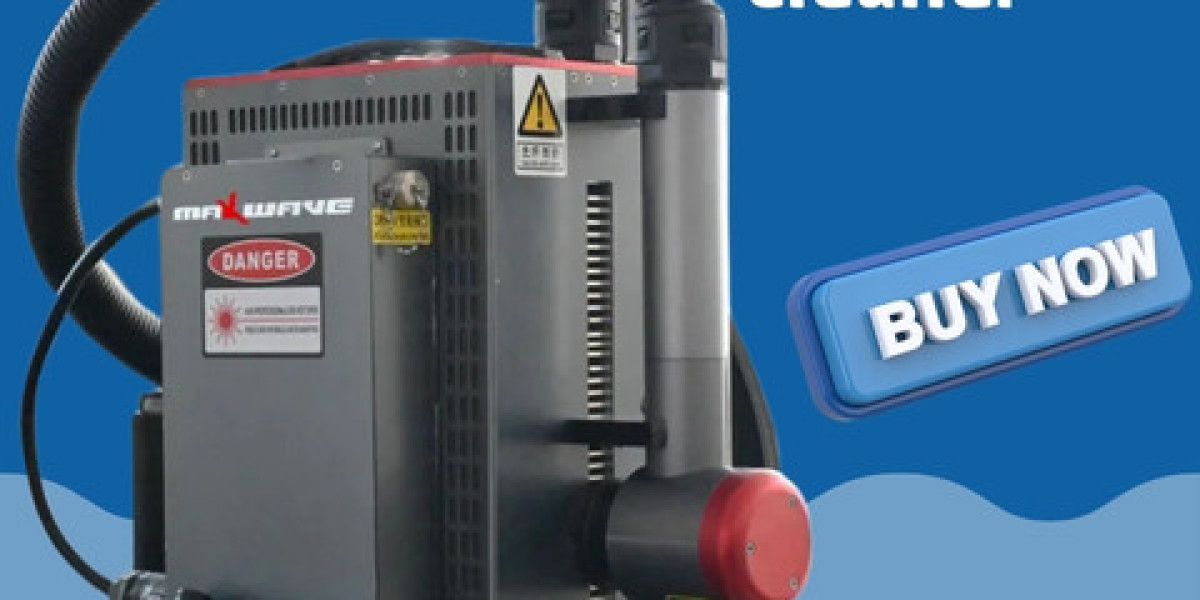In recent years, the handheld laser cleaner has become one of the most practical tools for industries that deal with complex materials and demanding cleaning standards. It combines precision, efficiency, and portability, making it highly relevant for manufacturers, repair facilities, and even research environments.
Unlike mechanical grinding or chemical-based cleaning methods, this modern device uses laser beams directed onto the surface to vaporize or remove unwanted substances. Rust, paint, oil, and other layers that accumulate over time can be treated without causing damage to the base material. This makes the handheld laser cleaner suitable for industries where precision is essential and surface integrity cannot be compromised.
How the Handheld Laser Cleaner Works
The science behind this cleaning method lies in laser ablation. A focused beam of light energy interacts with the contaminants on the surface. The energy density of the laser is high enough to break the molecular bonds of the unwanted layer while keeping the underlying surface intact. The handheld design ensures flexibility, allowing operators to target specific areas instead of treating the entire component at once.
The laser beam’s intensity, pulse duration, and wavelength are carefully controlled. These variables make it possible to remove different types of layers—whether thick rust, thin oxide films, or delicate coatings—without affecting the metal, stone, or composite underneath. The handheld laser cleaner makes the process adaptable to various tasks in industries ranging from aerospace to automotive.
Industrial Applications of Handheld Laser Cleaner
The versatility of this technology is one of the reasons it has seen widespread adoption. Below are some areas where its use is proving essential:
Automotive Industry: Old parts and machinery often need cleaning before being reused or reprocessed. Paint removal, rust treatment, and surface preparation before welding are tasks where a handheld laser cleaner plays a key role.
Aerospace Maintenance: Aircraft structures require strict surface preparation for safety and performance. Using laser cleaning ensures that the parts are free from contaminants without weakening the metal.
Cultural Heritage Restoration: Historical monuments, sculptures, and artifacts accumulate dust, pollutants, and corrosion over time. Laser cleaning allows careful removal without destroying delicate details.
Electronics and Precision Engineering: In sensitive applications where harsh chemicals cannot be used, handheld lasers allow targeted treatment of micro-components.
Shipbuilding and Marine Equipment: Saltwater exposure accelerates corrosion. The handheld laser cleaner helps in removing rust and preparing surfaces for protective coatings.
Why Industries Prefer This Technology
The global shift towards sustainable manufacturing has highlighted the need for methods that reduce waste and chemical usage. Traditional cleaning processes often rely on sandblasting, abrasive materials, or acids, which generate waste and can pose environmental hazards. By contrast, a handheld laser cleaner produces minimal residue, usually limited to dust or fumes that can be collected with proper extraction systems.
It also minimizes downtime. Since there is no need for consumables like sand, brushes, or chemical solutions, operators can perform cleaning tasks more quickly. The handheld design gives workers mobility, especially in hard-to-reach areas where larger machines cannot be applied.
Handheld Laser Cleaner in Modern Manufacturing
Factories are constantly under pressure to increase efficiency while maintaining product quality. Surface preparation is a small part of the production process, but its impact is significant. A poorly cleaned surface can lead to adhesion failures, reduced lifespan of components, or unexpected breakdowns.
Using a handheld laser cleaner ensures that each part receives consistent treatment. The precision of the laser allows operators to avoid overcleaning or undercleaning, which can happen with manual grinding. In automated setups, handheld units can even be integrated as part of a hybrid workflow where both manual and robotic cleaning coexist.
Safety and Operational Considerations
Every technology that involves high-energy beams requires careful handling. Operators must use protective equipment such as laser safety glasses and ensure that the workspace is designed to handle reflected beams. Ventilation systems are also recommended because the process releases microscopic particles into the air.
Despite these requirements, the handheld laser cleaner is often seen as safer compared to methods involving harsh chemicals or abrasive blasting. It reduces operator fatigue because the device itself handles the heavy cleaning process, requiring less physical effort. Training is usually provided so workers can adjust settings according to the material being treated.
The Growing Role in Sustainability
Many industries today are adopting strategies to meet sustainability goals. A handheld laser cleaner supports these efforts by minimizing chemical usage and reducing consumable waste. It contributes to cleaner production practices, which are becoming part of global regulations and certifications. Companies that adopt such methods not only improve their operational efficiency but also demonstrate responsibility toward the environment.
Practical Scenarios of Use
Restoring Industrial Machinery: A machine that has been idle for years often develops rust. Instead of replacing expensive parts, industries can restore them with laser cleaning.
Pipeline Maintenance: Oil and gas pipelines require regular inspection. Before applying protective coatings, a handheld laser cleaner is used to prepare the surface.
Mold and Tool Cleaning: Manufacturing molds used in plastics or metal casting accumulate residues. Laser cleaning ensures smooth surfaces for consistent production quality.
Military Equipment Maintenance: Vehicles and weapons systems require effective rust and paint removal without weakening the materials.
Future Outlook of Handheld Laser Cleaner Technology
The demand for compact, efficient, and eco-friendly cleaning tools is expected to rise. As industries push for automation, handheld models may integrate with robotic arms for semi-automated tasks. Advances in laser sources, such as higher energy efficiency and improved portability, will further expand the application of these devices.
Research is also focusing on developing more user-friendly control interfaces, making it easier for non-specialists to operate these devices. The continued growth of industries like renewable energy, aerospace, and medical equipment will create more opportunities for the handheld laser cleaner to be integrated into critical workflows.
Final Thoughts
The handheld laser cleaner is more than just a tool for removing rust or paint; it represents a shift toward smarter and more sustainable industrial practices. It combines precision, flexibility, and environmental responsibility in one portable solution. As industries continue to adopt advanced technologies, handheld laser cleaning will remain central to maintaining high-quality standards while reducing waste and inefficiency.













